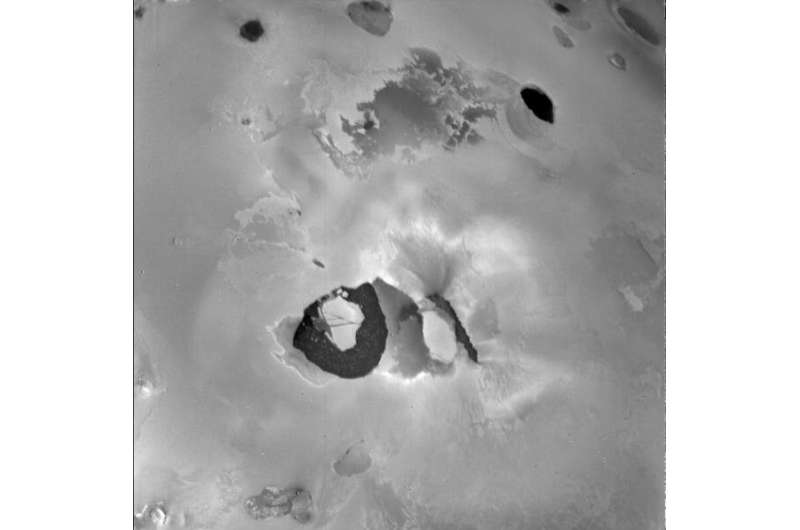Huge volcano on Jupiter's moon Io erupts on regular schedule

Volcanic eruptions are difficult to predict, but observations have shown the largest and most powerful volcano on Io, a large moon of Jupiter, has been erupting on a relatively regular schedule.
The volcano Loki is expected to erupt in mid-September, 2019, according to a poster by Planetary Science Institute Senior Scientist Julie Rathbun presented today.
"Loki is the largest and most powerful volcano on Io, so bright in the infrared that we can detect it using telescopes on the Earth," Rathbun said. Based on more than 20 years of observations, Loki undergoes periodic brightenings when it erupts on a relatively regular schedule. In the 1990s, that schedule was approximately every 540 days. It currently appears to be approximately every 475 days. Rathbun discovered the 540-day periodicity, described in her 2002 paper "L. Loki, Io: A periodic volcano" that appeared in Geophysical Research Letters.
"If this behavior remains the same, Loki should erupt in September 2019, around the same time as the EPSC-DPS meeting in Geneva. We correctly predicted that the last eruption would occur in May of 2018," said Rathbun, who presented her poster "Io's Loki volcano: An explanation of its tricky behaviour and prediction for the next eruption" on Sept. 17 at the Division for Planetary Sciences of the American Astronomical Society's 51st annual meeting in Geneva, Switzerland.
"Volcanoes are so difficult to predict because they are so complicated. Many things influence volcanic eruptions, including the rate of magma supply, the composition of the magma—particularly the presence of bubbles in the magma, the type of rock the volcano sits in, the fracture state of the rock, and many other issues," Rathbun said.
"We think that Loki could be predictable because it is so large. Because of its size, basic physics are likely to dominate when it erupts, so the small complications that affect smaller volcanoes are likely to not affect Loki as much," Rathbun said. "However, you have to be careful because Loki is named after a trickster god and the volcano has not been known to behave itself. In the early 2000s, once the 540 day pattern was detected, Loki's behavior changed and did not exhibit periodic behavior again until about 2013."
More information: J. A. Rathbun et al. Loki, Io: A periodic volcano, Geophysical Research Letters (2002). DOI: 10.1029/2002GL014747
Journal information: Geophysical Research Letters
Provided by Planetary Science Institute





















